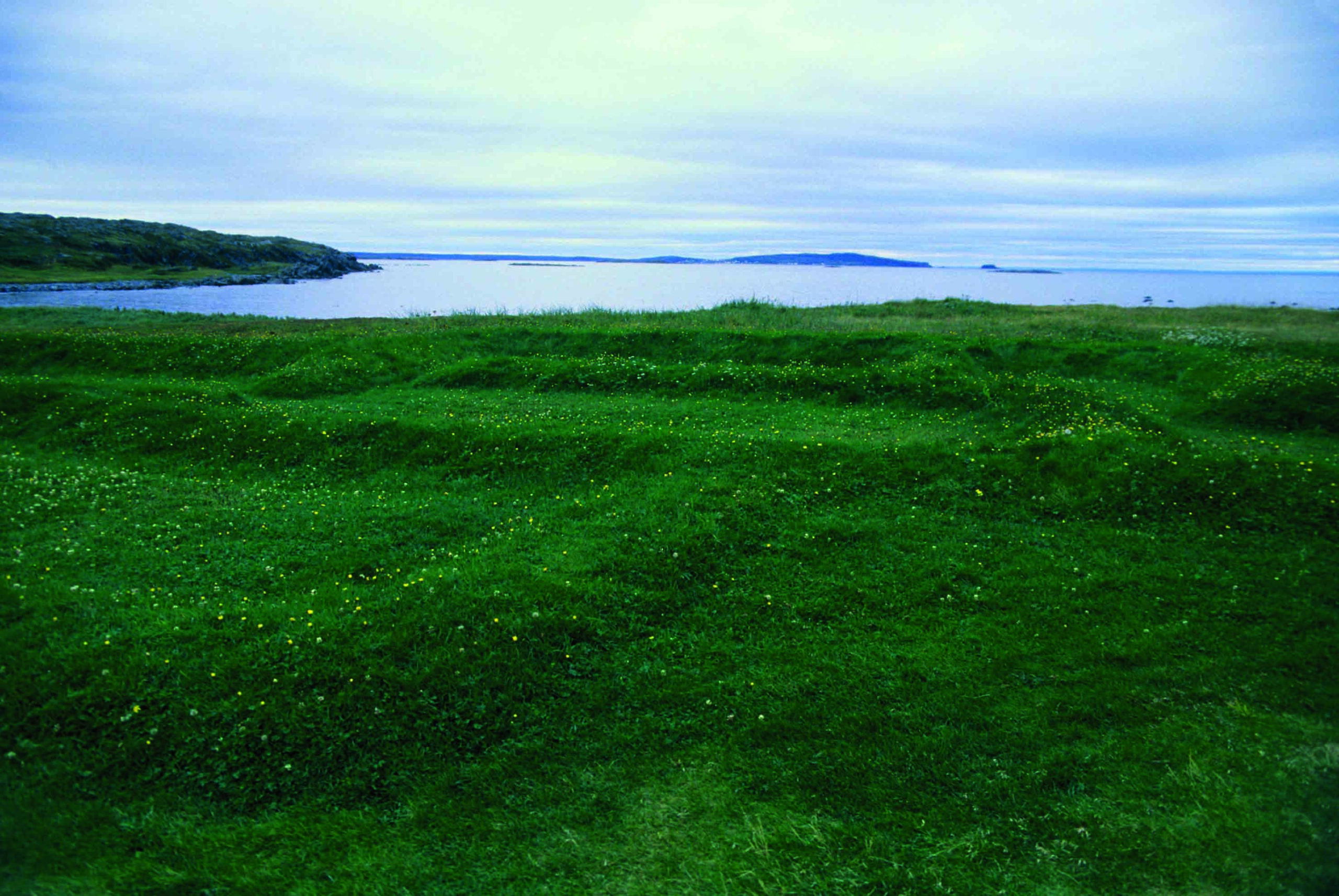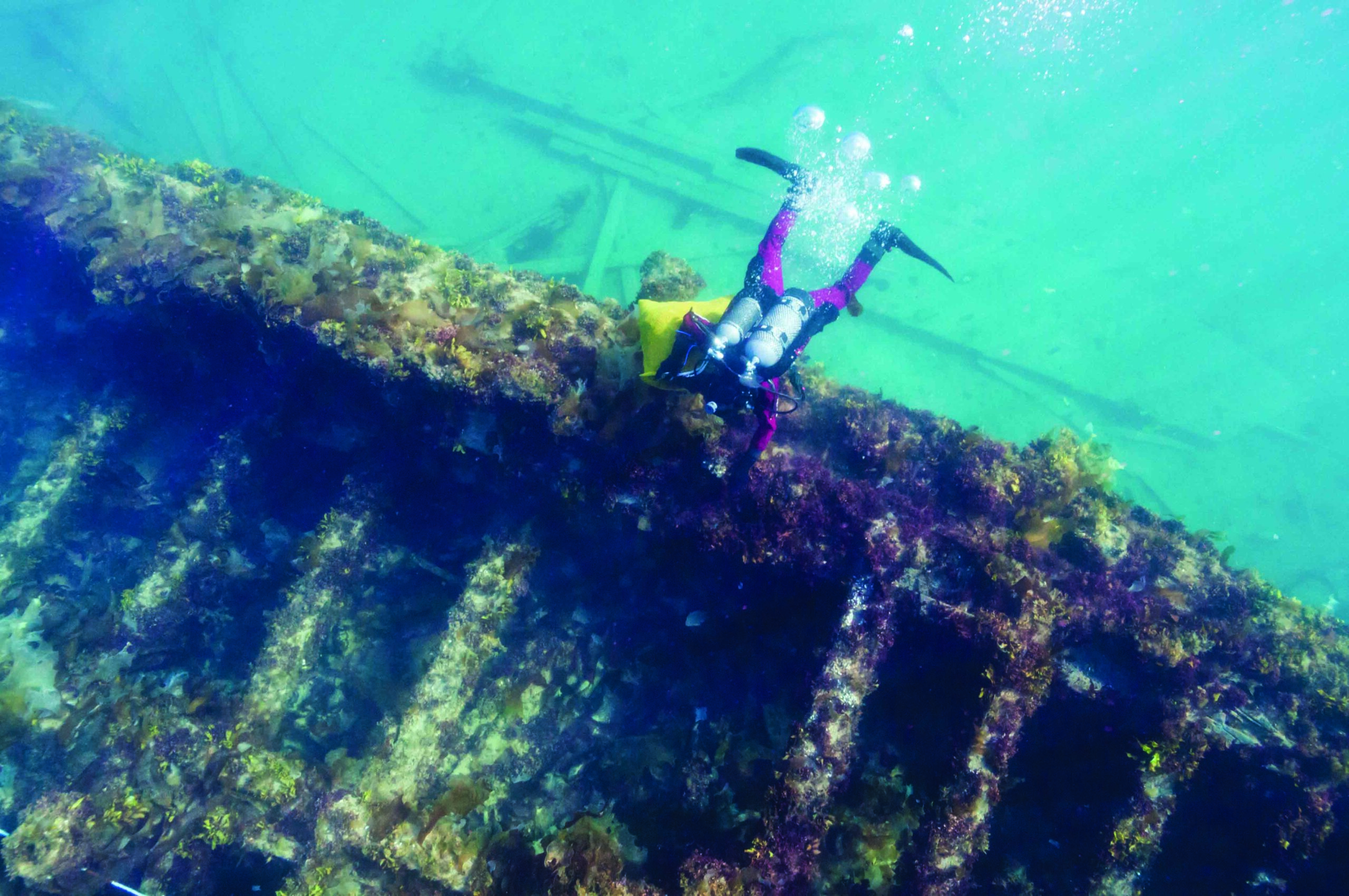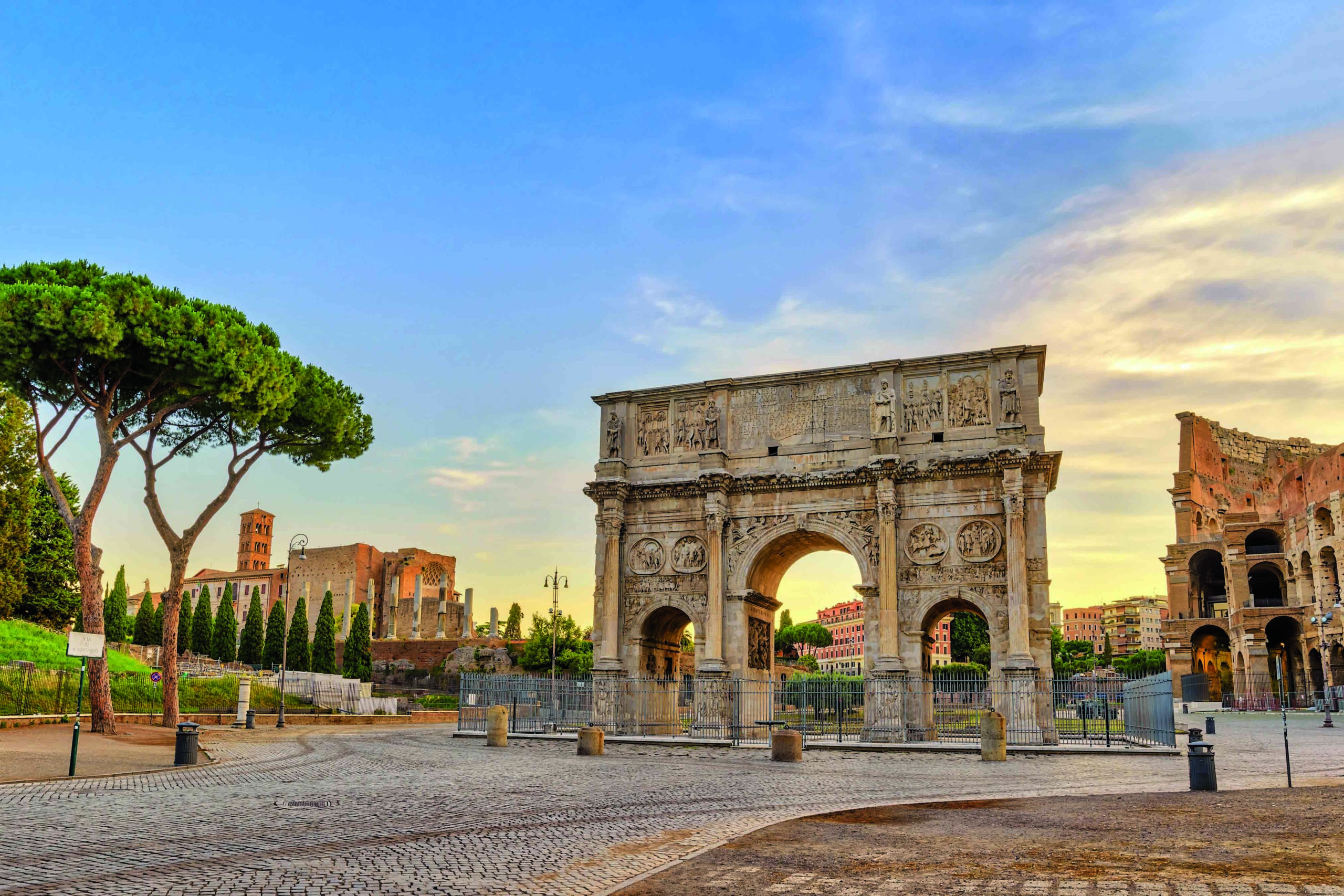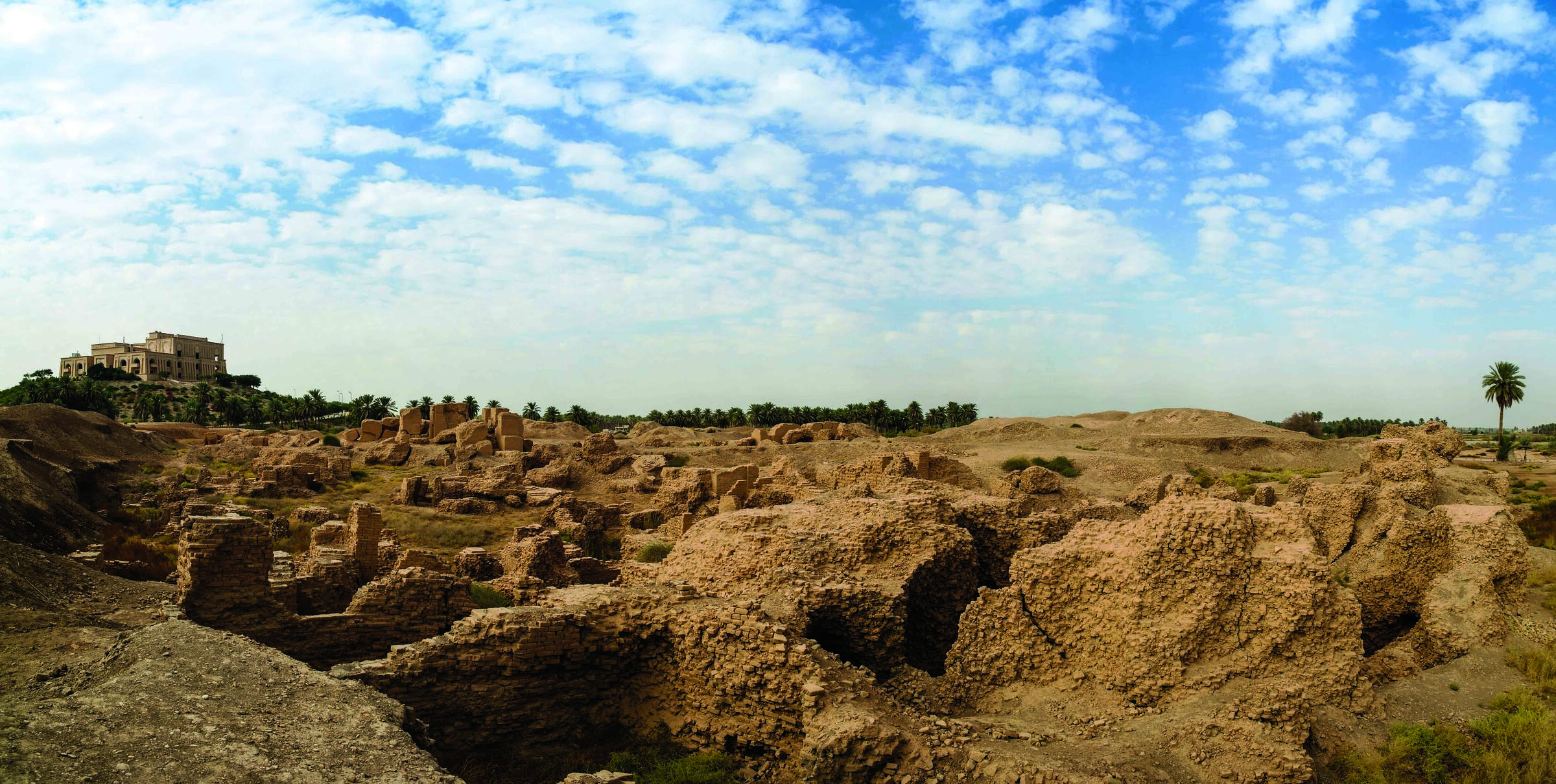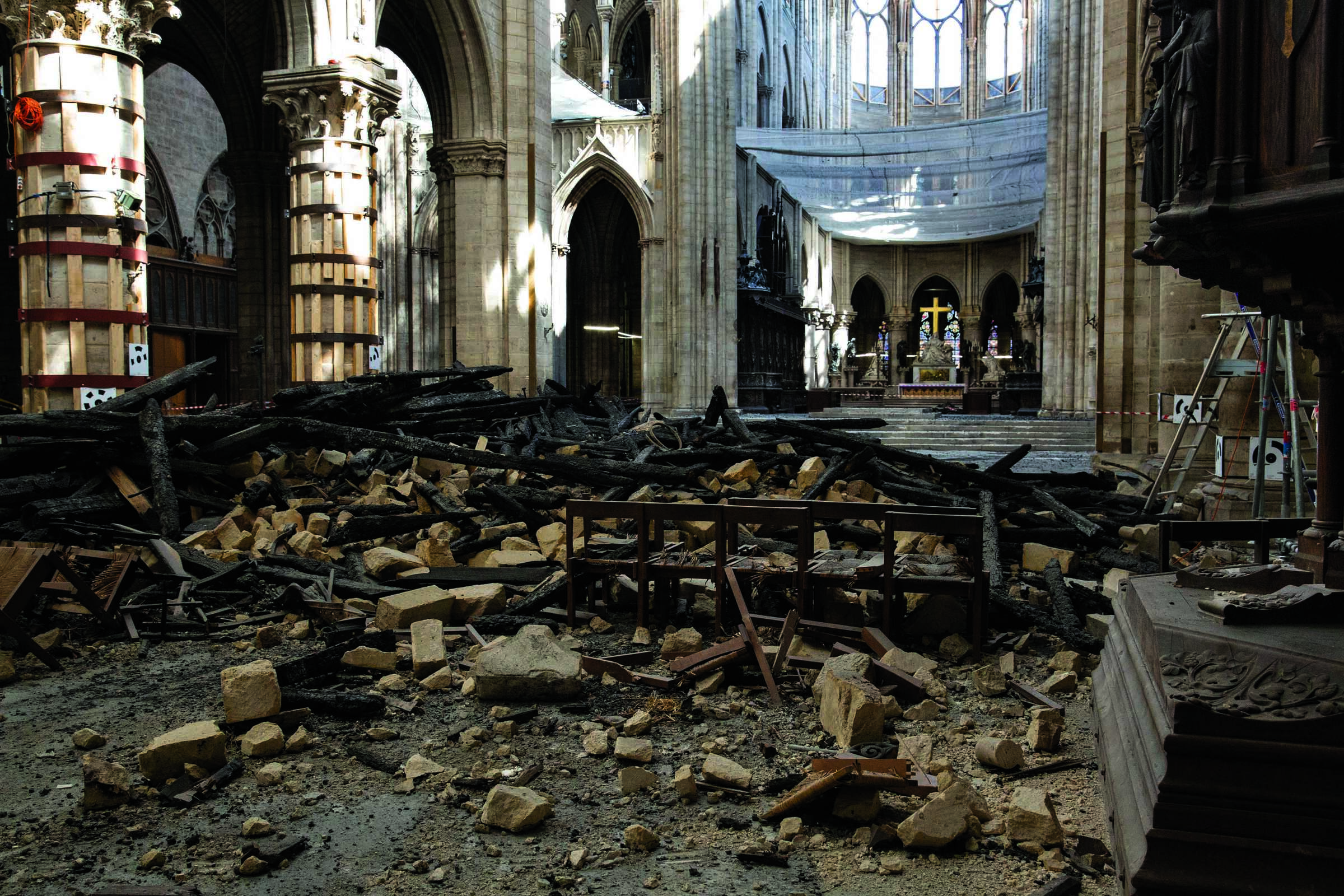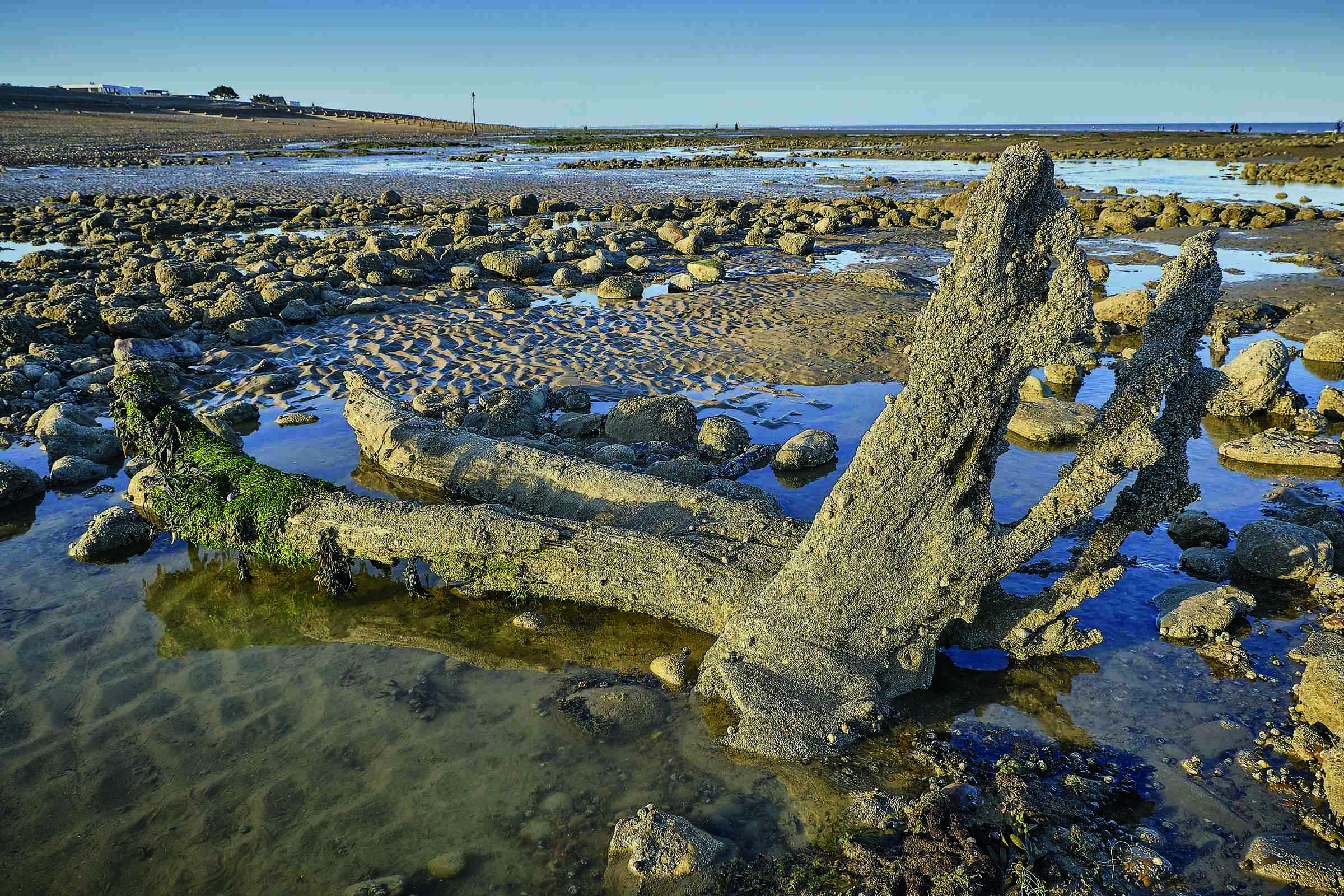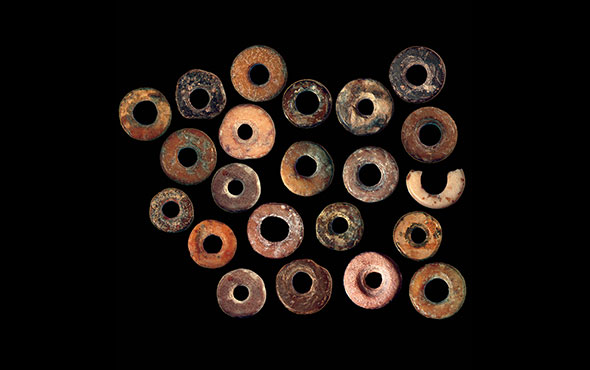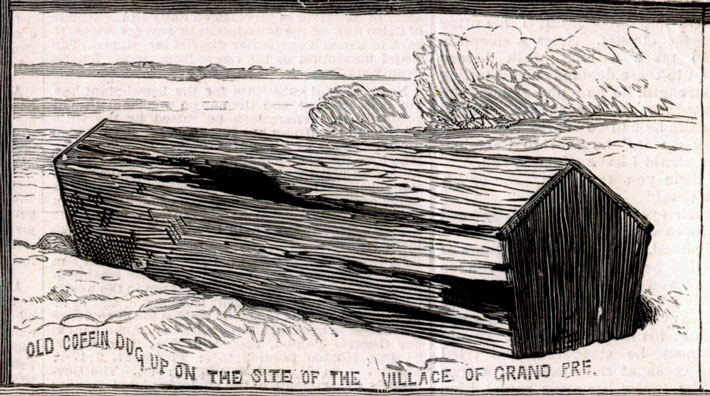
Starting in the early seventeenth century, the French began settling the colony of Acadia—which stretched across what is now Prince Edward Island, Nova Scotia, New Brunswick, and south into Maine—where they established a number of prosperous agricultural communities. A key to their success was a system of dikes they created, particularly in Nova Scotia, that allowed water to drain out of the marshes but prevented seawater from flowing back in. Once rain washed the salt away from this reclaimed land, it became extremely fertile thanks to the rich organic material that had been deposited by the tides over thousands of years. The great quantity of peas, wheat, and other grains, as well as livestock, which the Acadians consumed and exported, helped fuel population growth that is among the fastest ever recorded in human history, up to 4.5 percent per year. Between 1710 and 1730, the Acadian population doubled and then doubled again by 1755, when it reached around 14,000. The Acadians’ ambitious land reclamation project reached its apogee at Grand Pré, or “great meadow,” a village founded by a group of extended families around 1682. Grand Pré overlooked a vast expanse of marshland abutting the Minas Basin, home to the highest tides in the world, which can rise more than 50 feet. The Acadians’ expertise allowed them to tame the tides and transform this salt marsh into robust farmland.

In part because they created their own agricultural land, the Acadians had friendly, collaborative relationships with the Indigenous Mi’kmaq. In a place with such plenty, there was no need to compete for resources. There were even a significant number of marriages between the groups, which was unheard of in the New England colonies to the south, where Native peoples and Europeans were, at best, wary of each other. Heavily influenced by the Mi’kmaq, the Acadians developed a social structure based on communal cooperation that contrasted starkly with the rigid hierarchy they had known in France. This communal spirit was particularly helpful in organizing and carrying out the hard labor necessary to build and maintain the monumental dikes that held back the tides. “In France, if you were a peasant, you were under a nobleman’s control and had no real freedom,” says Rob Ferguson, a retired Parks Canada archaeologist. “When the colonists came to Acadia, they suddenly had control of their own lives. They had their own farms and they could sell their crops. There was intermarrying between levels of society that would never have happened in France. In a way, they really did have a paradise.”
EXPAND
From Acadian to Cajun
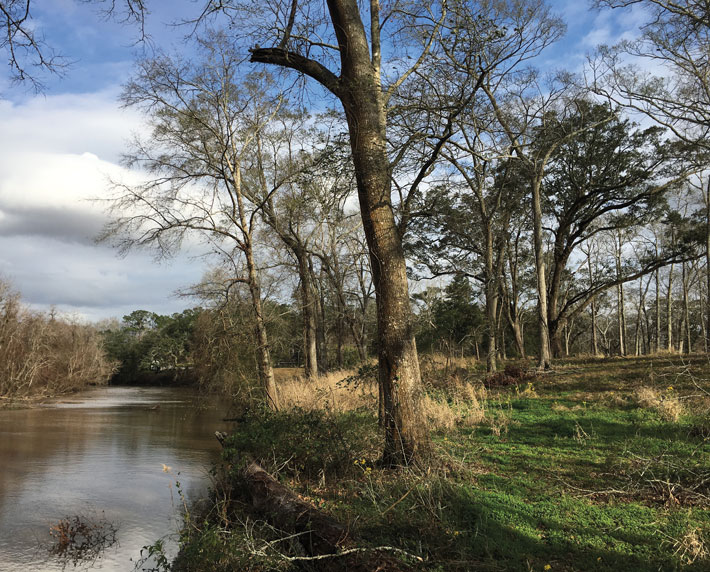
When the British deported thousands of Acadians from Nova Scotia and the surrounding region starting in 1755, they attempted to divide the exiles into small groups to prevent them from banding together and resisting or returning. Marginalized in their new communities, many Acadians ended up regrouping and settling in Louisiana. By 1800, more than 4,000 transplants were living in Nouvelle Acadie, or New Acadia, where they became known as Cajuns, a moniker derived from the pronunciation of ’Cadiens. However, little archaeological work has been dedicated to finding evidence of Louisiana’s early Acadian settlers.
Among the most storied of these early arrivals was a group led by the brothers Joseph and Alexandre Broussard. The pair had waged a legendary, if ultimately doomed, guerrilla campaign against the British in Nova Scotia after the initial deportations. In November 1764, they finally admitted defeat and left their homeland for the French colony of Saint-Domingue, modern-day Haiti. After a brief stopover there they continued on to New Orleans with nearly 200 compatriots, likely believing that it was also a French colony. However, the French had secretly ceded Louisiana to the Spanish in 1762, but remained as caretakers of the colony until 1766. The acting French governor lauded Joseph Broussard as a hero for his efforts against the British and offered his group land at Poste des Attakapas, west of New Orleans. Soon after arriving there, the settlers were devastated by an epidemic, possibly yellow fever. Alexandre died in September 1765, and Joseph died the next month at a camp known as Beausoleil, or Beautiful Sun, the brothers’ shared nickname.
Mark Rees, an archaeologist at the University of Louisiana at Lafayette, leads the New Acadia Project and is attempting to uncover traces of Camp Beausoleil and two other clusters of homesites. These sites are thought to be located around the village of Loreauville on the natural levee of Bayou Teche, which was once a channel of the Mississippi River. Rees has excavated at a location he believes was one of these camps. Tin-glazed and other eighteenth-century ceramics have been found at three sites in all, including a location that may be Joseph Broussard’s final resting place. “The site is protected by the bayou on three sides and sits on the relatively higher ground of Teche Ridge,” Rees says. “It appears to be the perfect strategic location for Camp Beausoleil.”
Regardless of their successes, the Acadians were repeatedly caught up in the geopolitical rivalry between France and Britain, with control of Nova Scotia passing back and forth between the two empires multiple times. The Acadians endeavored to remain neutral, resisting attempts by both sides to win their fealty. They cultivated profitable trade relations with New England merchants, whom at least one source records they dubbed nos amis les ennemis, or “our friends the enemy.” Over time, the Acadians came to see themselves as an independent creole people, native to their new land and no longer bound to their home country. They would raise the French or English flag depending on whose gunships were coming to pay a visit. When the British took control of Nova Scotia for good in 1713, the French tried to entice the Acadians to move to Île Royale, modern-day Cape Breton Island, but most remained where they were, reasoning that the British were more likely to leave them alone. They were mistaken, however, and their position grew increasingly precarious. Suspicious of the Acadians because they were Catholic and friendly with the Mi’kmaq, British representatives pressured them to pledge an unconditional oath of allegiance to the Crown. The Acadians managed to fend off their demands for several decades, in no small measure because local British forces depended on their crops for sustenance.
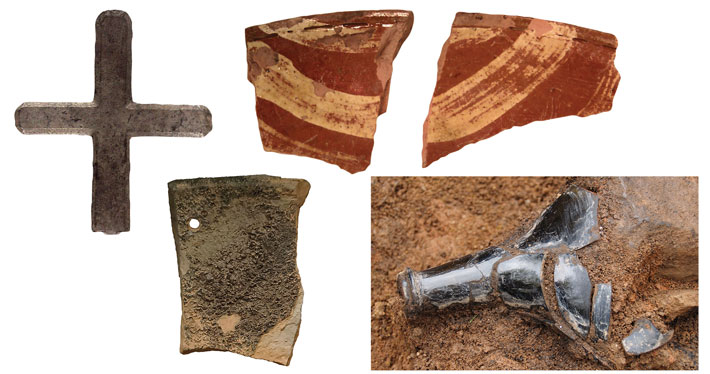
Thus, when Lieutenant-Colonel John Winslow, a British military commander from Massachusetts, arrived at Grand Pré with a detachment of 300 troops on August 19, 1755, many local Acadians assumed this was just the latest attempt to secure their allegiance. When Winslow and his men set up camp in and around the parish church, Saint-Charles-des-Mines, and surrounded it with a defensive palisade, few Acadians panicked. And, on Friday, September 5, when Winslow summoned all men and boys older than 10 living in the village and the surrounding district to meet with him in the church, 418 residents showed up. They were greatly shocked, then, to hear the commander read a proclamation stating that they would have to forfeit their land, livestock, and most other possessions, and that they and their families would be forced to leave their land. Similar messages were delivered to communities elsewhere in Nova Scotia, and over the next few months, more than 6,000 Acadians living there were shipped to destinations throughout the Americas and Europe in overcrowded, inhumane conditions. The remainder fled to the peninsula’s interior to live with the Mi’kmaq, to French-controlled Île Saint-Jean (modern-day Prince Edward Island), or to New Brunswick, which was contested territory at the time. Around 1,000 Acadians perished on the deportation journeys due to shipwreck or disease, and many others were separated from their families. Several thousand more Acadians were expelled from the region over the next few years. (See “From Acadian to Cajun.”)
Winslow was ordered to burn most structures at Grand Pré so that those who had escaped the deportation would be deprived of resources. Starting in 1760, new Protestant colonists began to arrive from New England and build their own structures on the landscape. In the early twentieth century, Acadian descendants constructed a number of monuments to their ancestors’ past. Two hundred fifty years after the Acadians were deported, evidence of their presence at Grand Pré is difficult to discern. Over the past two decades, Jonathan Fowler, an archaeologist at Saint Mary’s University in Halifax, has employed a range of methods to identify traces of the Acadian community that once thrived there, as well as of the forces that crushed it. “The scorched-earth policy of the British, who destroyed many of the Acadian settlements, has given rise to an archaeological landscape,” he says. “My work is about reconstructing a map of that world that has disappeared. We have old maps. We have a little bit of folklore. And we have, of course, archaeology.”
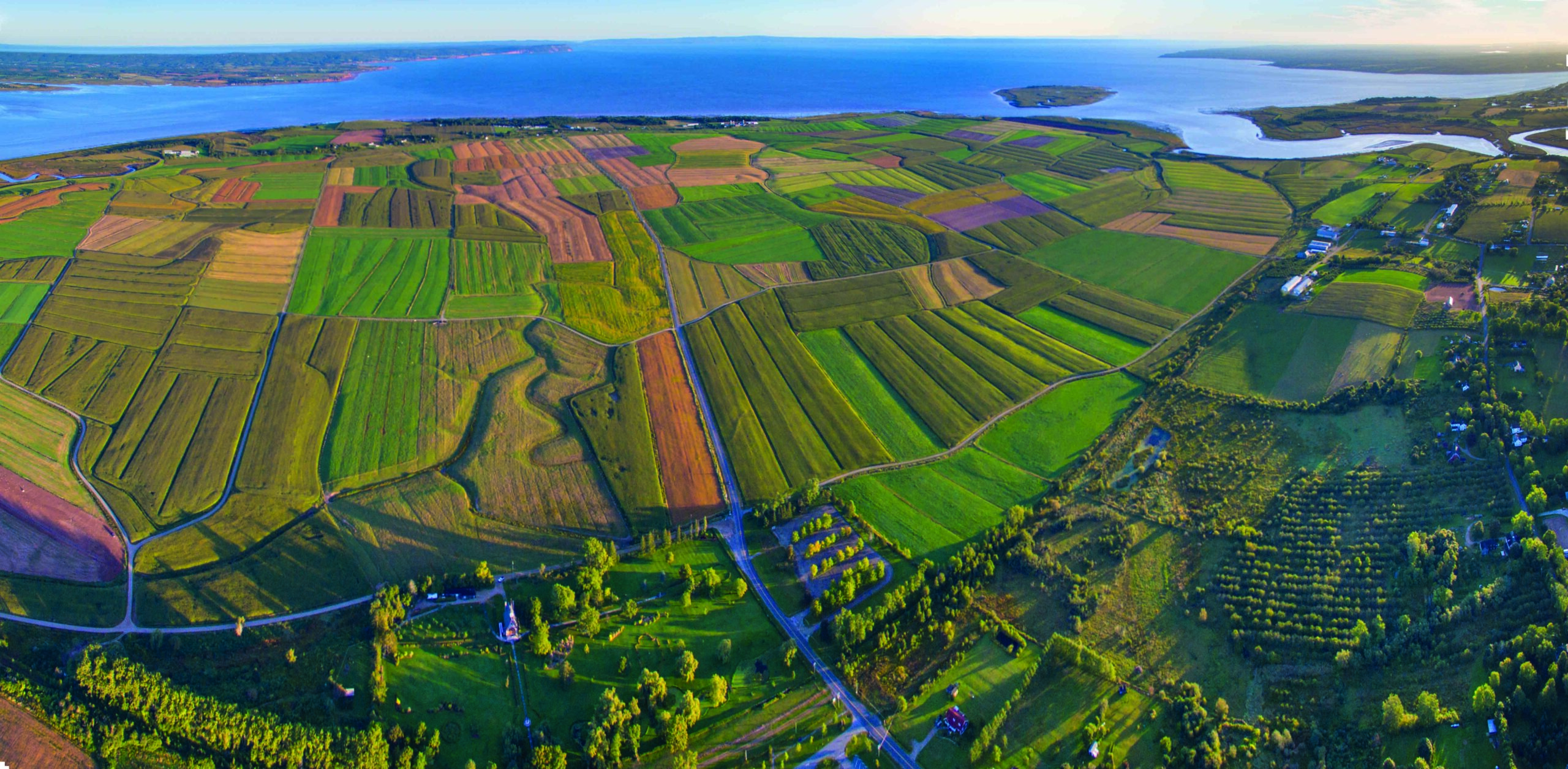
A sense of tragic loss pervaded Acadians’ memories in the decades after 1755, which is reflected in their term for the removal period, le grand dérangement, or “the great upheaval.” Most wounding was the widespread separation of family members. This sentiment was crystallized by Massachusetts poet Henry Wadsworth Longfellow in his wildly popular 1847 epic Evangeline. In it, he portrays the Acadians and their expulsion in highly romantic terms, describing Grand Pré as “the forest primeval,” evoking the “wail of sorrow and anger” that erupts from the men and boys in the parish church when they hear Winslow’s proclamation, and depicting the deportees as “scattered…like flakes of snow” in the driving wind. The poem focuses on a fictional young couple from Grand Pré, Evangeline and Gabriel, who are separated on their wedding day. Evangeline spends the rest of her life trying to track down her beloved only to find him in an almshouse in Philadelphia on the verge of death. They embrace, lamenting the life together that was stolen from them, and he dies in her arms. She follows soon after, and they are buried side by side. “Once Longfellow’s poem became famous, people began visiting sleepy little Grand Pré,” says Fowler. “It was never really well known before, but came to be seen as a kind of holy place in Acadian history.”
Among those who made the pilgrimage to Grand Pré after Longfellow published Evangeline were amateur antiquarians, who dug up several wooden coffins from the Acadian cemetery near the parish church. One coffin was put on display at a local hotel and another was left at the town’s railroad station, where visitors took it away in parts as souvenirs. In the first decade of the twentieth century, Acadian descendant John Frederic Herbin purchased the land where the cemetery was located and marked it with a stone cross. Then, in the 1920s, a bronze statue of Evangeline was erected and Acadians built a memorial church on the purported site of the 1755 roundup. In 1982, Parks Canada established the Grand-Pré National Historic Site, encompassing the area surrounding the memorial church and Herbin’s Cross. That same year, Parks Canada archaeologists found four grave shafts just north of the cross, confirming that it marks the site of the Acadian cemetery.

Nonetheless, when Fowler began his archaeological project at Grand Pré, much about the site remained unknown. He hoped to find remnants of the Acadian dike infrastructure and traces of Winslow’s 1755 military camp. Most importantly, Fowler wanted to determine whether the memorial church marked the actual location of the original Acadian parish church. “That church has a strong sentimental meaning to the Acadian people,” says Ferguson, who codirected the Grand Pré project with Fowler for its first few years. “It was where the great tragedy began.” Fowler’s work has been followed closely by Acadian descendants such as Marie-Claude Rioux, executive director of the Fédération acadienne de la Nouvelle-Écosse, or the Acadian Federation of Nova Scotia, some of whose ancestors lived in Grand Pré at the time of the deportation. “When the Acadians were expelled, the majority of their buildings and belongings were burned or disappeared,” she says. “When you dig and you find something that belonged to the Acadians, it brings that history back to light.”

In May 2006, Fowler was called to the Grand Pré marsh, where a machinery operator had unearthed a wooden sluice. This turned out to be an aboiteau, the linchpin of Acadian dikeland agriculture. Essentially a hollowed-out white pine log, it was equipped with a valve that allowed water to drain out of the marsh but blocked seawater from entering as the tide rose. Sod, spruce brush, and wooden stakes were found packed around the aboiteau. The sod was densely matted with marsh grass whose roots grew together to help hold the dikes in place against the onslaught of the tides, while the stakes strengthened the structure, akin to how rebar reinforces concrete. “The preservation of the aboiteau was just stunning,” says Fowler. “You could still see the ax marks, and the spruce boughs and marsh grass were still green. It was a really impressive sight.” The aboiteau was dated to 1691 using dendrochronology, meaning it was put in place within the first decade after Grand Pré was settled. The sluice was found near the middle of the marsh, which is known to be where the Acadians began their land reclamation project. They then worked their way out, diking off the land section by section. By 1755, they had built nearly 19 miles of dike walls to reclaim nearly four square miles of tidal marsh and turned it into a network of highly productive fields.
The Acadians’ agricultural plenty gave them access to luxury items through trade with New England merchants, evidence of which has been uncovered in the remains of Acadian houses excavated by Fowler and others. “Some of the Acadians were fairly wealthy, and we see that they’re acquiring goods from England, from Germany, from Bohemia,” says Ferguson. Among the artifacts Fowler has unearthed are British clay pipes, dishware from New England, and a silver cross, likely part of a ciborium, a vessel used to hold the Eucharistic bread. His and other excavations have yielded glass and ceramic items from across Europe, painting a picture of a cosmopolitan community.
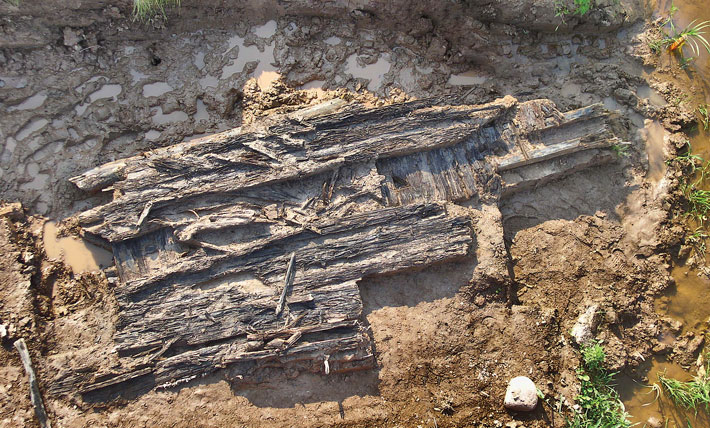
When Parks Canada archaeologists identified grave shafts near Herbin’s Cross in 1982, they unearthed nails and soil stains from the coffins, but the coffins and human skeletons had been eaten away by the site’s acidic soil. Building on this discovery, Fowler has used ground-penetrating radar to map the rest of the Acadian parish cemetery and located 289 graves. On two sides of the cemetery, he has identified thin lines that he interprets as fence lines demarcating its eastern and western edges. In one of these lines, Fowler unearthed carbonized seeds, including oats and peas, traditional staples of the French diet during the period, which he describes as “the fingerprint of the Acadians,” as well as blueberries, which grow wild in the area. “That shows a culture adapting,” Fowler says. “I can imagine the conversations between the European newcomers and the Indigenous inhabitants of the land: ‘Can I eat this, or will it kill me?’”
Just a few feet past the eastern cemetery boundary, Fowler found a thicker line of disturbed earth. He believes this demarcates where Winslow’s men built their palisade, a row of sharpened wooden stakes set in the ground, when they established their camp at Grand Pré in 1755. Winslow writes in his journal that he ordered that the palisade encircle the Acadian cemetery as well as the parish church. In this enclosed area, Fowler and his team have unearthed a large number of unfired musket balls, British gunflints, and gun parts, all left behind by Winslow’s troops. “The material that we’ve found is in a location that matches the description in the historical records for where the camp was located and, more specifically, where Winslow’s men pitched their tents,” says Fowler. “I recall feeling a kind of weight descend as we started pulling those musket balls out of the ground, with the knowledge that we were coming very close to the events of 1755.”
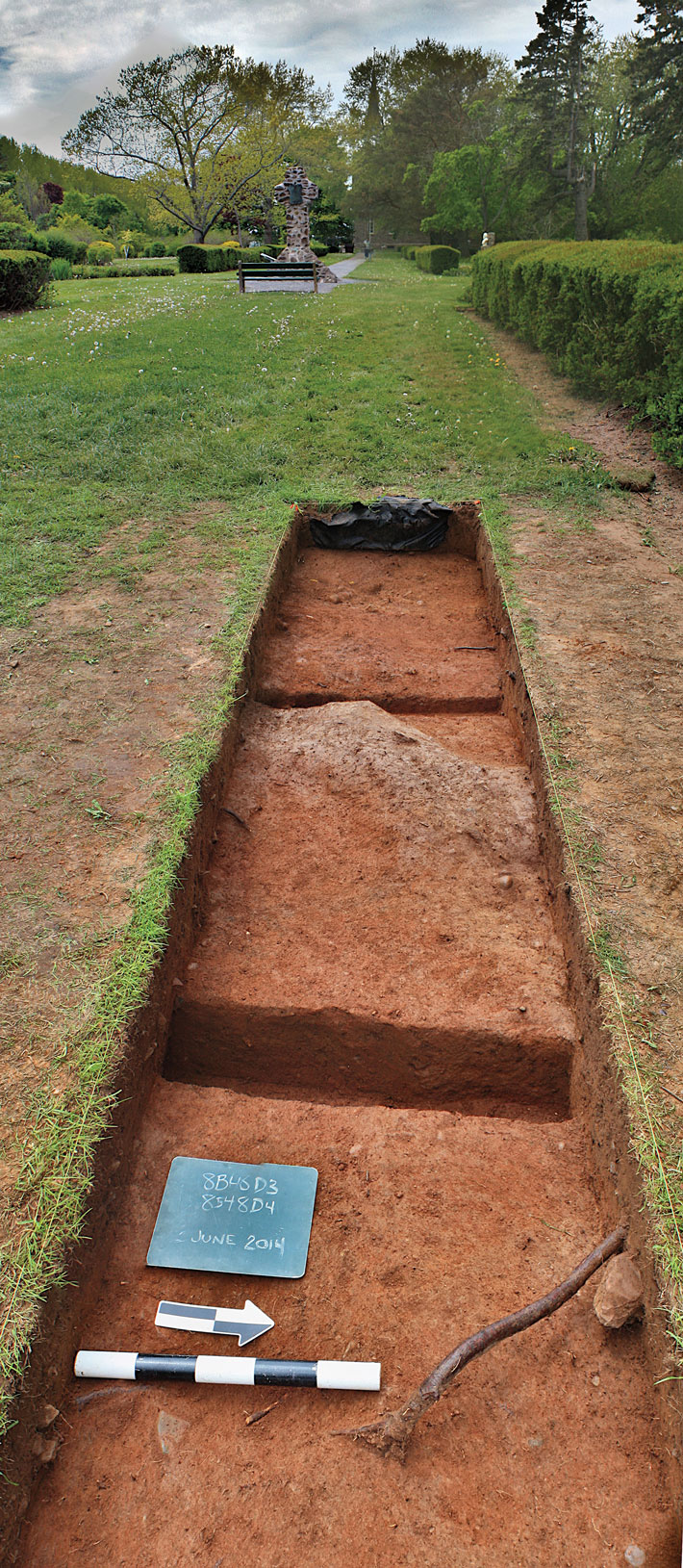
Still, the site of the parish church where Winslow read the deportation order remained elusive. “Our question was, did the people who built the memorial church to mark the spot get it right?” says Fowler. “There had been no professional archaeology done to ascertain whether that was true or not. It was all based on folklore and decisions that were made 100 years ago.” In surveys of Winslow’s camp, Fowler and his team had uncovered the cellars of two Acadian houses, but no foundations large enough to have been the parish church. Then, using magnetic sensing equipment, he detected a burned patch of ground measuring roughly 100 feet by 30 feet. When raised to a high temperature, iron, which is abundant in soil, is magnetized. Fowler’s team carried out excavations of this footprint and determined that a timber building constructed using wattle and daub, which is typical of French colonial architecture, had once stood on the site. Artifacts unearthed below the burn layer date to the French colonial period, whereas those above it date to the late eighteenth century and into modern times, further evidence that the structure was built by the Acadians and then burned at the time of the expulsion or shortly thereafter.
Given its size, orientation, and location, Fowler believes this structure was likely the parish church. “It’s certainly the largest building of its kind in the vicinity and would have been large enough to hold the number of men and soldiers indicated in Winslow’s journal,” he says. The spot where the parish church appears to have stood lies some 175 feet east of the memorial church. On the surface, it looks like an undistinguished swath of lawn, and the burn layer detected by Fowler’s survey is barely visible to the naked eye. Still, for Rioux, as an Acadian descendant, the discovery of the church’s location is highly significant. “Every little element that is being found by archaeologists gives us a better understanding of what happened,” she says. “The fact that you can find proof that the church was there means we’ll be able to say, ‘This is exactly where the expulsion happened.’”
When the first New England colonists came to Nova Scotia five years after the Acadians were expelled, they encountered a landscape littered with bleached bones of livestock and burned ruins of houses. The dikes had fallen into disrepair due to neglect and storm damage, and the new arrivals had no idea how to repair them. To get the dikes up and running again, the provincial government turned to 2,000 Acadians who had avoided deportation but had surrendered or been captured in recent months. These Acadians, who had once reveled in their freedom to farm the land they had reclaimed from the sea and thrived on what they produced, were now put to work as poorly compensated laborers. With their help, the land would remain fertile and yield bumper crops for years to come, but the Acadians would have to stand by and watch as those who had taken their place reaped the rewards.





